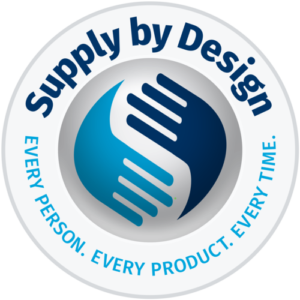PHARMALINK Resources > Supplier Quality
Supplier Quality
Every person. Every product. Every time.
In February of 2022, the efforts of Xavier Health were assumed by the AFDO/RAPS Healthcare Products Collaborative. Because of the important work done before this transition, the Collaborative has chosen to retain documents that have Xavier branding and continue to provide them to the communities through this website. If you have questions, please contact us at info@healthcareproducts.org.
A message from Marla Phillips, Director, Xavier Health:
I am pleased to announce, on behalf of my FDA and industry team members, the release of the highly-anticipated Good Supply Practices for the 21st Century, a global tool for industry and regulators.
Announcing! The United States Pharmacopeia (USP) and Xavier University partner on the development of a new USP general information chapter on the GSPs to give this work a global platform.

1.) COMPLETING THE GXP SUITE
As a result of seven years of focused research, development, testing, and broad stakeholder input, the Good Supply Practices (GSPs) complete the missing piece of the GXP puzzle. These breakthrough supply chain practices provide a solid foundation for the GMP, GCP, GLP, and GDPs, which increase the reliability of your product throughout its entire lifecycle.
2.) SIGNIFICANT PARADIGM-SHIFT IN HOW TO THINK ABOUT SUPPLY CHAIN CONTROLS
The Good Supply Practice initiative revealed that we, the manufacturers, are either causing, or could prevent, every supply chain failure we experience. So, instead of trying to “fix” our suppliers, it’s time to look in the mirror and adopt practices that will result in breakthrough supply chain quality.
Start enjoying the benefits of this work by making a difference in your supply chain performance today! To download your free copy of Good Supply Practices for the 21st Century, click here.
3.) LEARN FROM THE AUTHORS!
Xavier Health is proud to partner with the GSP authors (Xavier Health Certified Trainers) to offer immersive learning experiences for you that is grounded in the knowledge and intent of the comprehensive Good Supply Practices work. The following organizations are considered Xavier Health Certified Trainers:
- Supply Chain Optimization, LLC
Jack Solomon (President) co-led the initiative for six years, and was a major contributor to all of the solutions in the GSP work. - Compliance Insight
Cindy Ipach (President) and Troy Fugate (Vice President) were major contributors to several solutions within the GSP. Troy served as a co-leader for three years. - Globalworx GMBH
Viliam Kovac (Managing Director) was a major contributor to several solutions within the GSP, and was involved for five years.
If you would like company-specific training on the GSP work (virtual or at your site), contact us today.
4.) INITIATIVES THROUGH XAVIER HEALTH
The Good Supply Practice Initiative is one example of the ways in which you can join regulators and your industry colleagues to make a difference across the industry. Plan on joining us at:
- PharmaLink – every March
- MedCon – every May
- AI Summit – every August
- Combination Products Summit – every September/October

Proven Supplier Quality
Good Supply Practices have been developed by FDA officials and industry professionals across the Life Sciences industry (pharmaceutical/biotech and medical device) through a methodical Supply-by-Design process that increases the reliability of incoming supply, and therefore reduces the risk to finished product quality, patient safety and business success.
This impact has been achieved by determining the source of dysfunction affecting the integrity of supply, and implementing sustainable solutions that can be tied to return on investment—such as increased safety, improved quality and enhanced reliability—commensurate with the need.
Problem Statement
During the 2010 and 2011 FDA/Xavier PharmaLink and FDA/Xavier MedCon Conferences, both industries expressed repeated concerns related to not being able to reliably and consistently ensure the supply of incoming materials used in products to serve the Life Science. As a result, Xavier University formed a team of FDA Officials and industry professionals in 2012 to investigate root causes and develop impactful solutions using the DMADV (Define, Measure, Analyze, Design, Verify) process (current team members are listed at the end of the page).
Scope of Work
- Incoming material and contracted services procured to support the manufacture of finished product.
- The pharmaceutical/biotech and medical device industries.
- The upstream and downstream supply chain.
Results
It has been, and still is today, widely believed that the lack of reliability of incoming material is based on poor performance of suppliers, and is therefore the basis of many supply chain management practices. In order to explore root causes, the Life Science manufacturers developed a comprehensive list of failure modes associated with the defined process flow shown in Figure 1.

Through the failure mode analysis work, a major paradigm shift was recognized in that all of the failure modes were related to risks either induced by the manufacturers themselves, or could have been avoided by the manufacturers. The failure modes were not solely related to poor performance of suppliers as originally surmised (Figure 2). This critical paradigm shift has enabled the Life Science industry to focus solutions on reducing risk caused by the manufacturers, and therefore, actually reduce risk to the final product.

The identified failure modes were then incorporated into a cause and effect matrix that each manufacturer and FDA officials scored against six critical customer criteria. A survey was sent to 162 suppliers who supply the pharmaceutical, medical device, and food industries. In every case, the suppliers corroborated the findings of the manufacturers and importantly, did not identify an obvious failure missed by the manufacturers.
The direct impact of this paradigm shift is that it:
- Shifts resources from trying to improve supplier performance to improving internal performance that affects the ability of the suppliers to perform well.
- Enables industry to take ownership of the failure modes impacting supply chain integrity.
- Enables industry to develop solutions that will reduce risk to product quality.
- Enables global regulators to understand critical root causes to supply chain integrity and therefore product quality risk.

Identified Areas of Opportunity
A Pareto analysis of the resulting Cause & Effect scores yielded a rank order of the failure modes in alignment with the critical criteria, and also enabled the team to identify high-level themes of failures present in the data—again, related to risks they themselves induce into the supply chain management process:
1
Lack of Product and Process Knowledge and Development
2
Poor Supply Chain Development and Management
3
Misaligned and Conflicting Internal Behaviors
I. LACK OF PRODUCT AND PROCESS KNOWLEDGE AND DEVELOPMENT
The original assumption at the outset of this Supply Chain Initiative was that suppliers cannot consistently supply what is needed. However, it was discovered through our research that manufacturers often do not know what specifications are actually needed, do not involve suppliers in development discussions at all or at the right time, do not explore the full expertise of suppliers, do not understand their own process well enough to know how the incoming material will impact their process, and do not ask for the process capability of their suppliers.
II. POOR SUPPLY CHAIN DEVELOPMENT AND MANAGEMENT
Many manufacturers have supplier selection and supplier approval processes in place, yet demands on speed to market often result in circumvention of these processes. It has also been found that supply agreements often conflict with the requirements of other agreements and drive the wrong behavior on both sides of the relationship. Additionally, although supplier qualification is not a new concept, it has been found that the elements of risk assessed are often not representative of key cross-functional requirements, and therefore, do not provide a complete representation of risk.
III. MISALIGNED AND CONFLICTING BEHAVIORS
Throughout product, process and supply chain development the data from the manufacturers revealed that a lack of internal involvement of cross-functional representatives consistently leads to a lack of alignment that results in increased risk. There is not a harmonized approach to understanding how to align internal objectives, involving the right groups at the right time, delineating roles and responsibilities, and knowing when and how to engage suppliers. There is a perception that manufacturers cannot share important information with their suppliers, and thus the lack of transparency hinders suppliers from being able to perform well for the manufacturers. Additionally, manufacturers historically conduct supplier qualifications to determine risk level of their suppliers, but do not assess the risk they bring to the relationship, which does not allow them to avoid false starts, delayed timing, poor product performance and increased risk to product quality.
Key Aspects of the Good Supply Practices:
- Development of pragmatic (i.e. business smart) supply practices that establish best practices that can be implemented irrespective of company size.
- Development of an Alignment Optimization model for product and process development that guides purpose-driven cross-functional involvement, the goals of each stage to maximize alignment, what to measure to determine the success of each stage of development, who the decision makers are, and when to involve suppliers.
- Establishment of a process for manufacturers to conduct a self-assessment to understand and ultimately mitigate risk they induce into the product, process and supply chain development.
- Establishment of key risk elements to assess during supplier qualification that include quality and business success factors.
- Clarification for industry of what information truly is confidential, versus what opportunities there are for transparency with suppliers that will enable suppliers to better support the manufacturers.
- Examples of how the Life Science industry can improve scheduling stability with suppliers so as to reduce opportunities for error that are introduced by the manufacturers.
- Clear understanding of product, process and supply chain risk for both industry and regulatory authorities.

